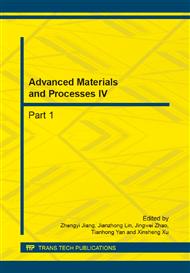p.795
p.800
p.804
p.809
p.813
p.817
p.821
p.826
p.832
Analysis the Failure for Earlier Fracture of 60Si2Mn Stabilizer Bar
Abstract:
The fracture samples of spring steel stabilizer bars in 60Si2Mn were researched in this paper. Through the methods such as macro-and micro-fracture analysis, SEM fracture morphology observation, microstructure observation (surface and internal organization), and macro-hardness testing to analysis the failure causes for earlier fracture of the stabilizer bars. The results were showed that the fatigue crack source for the non-stress stabilizer bar was on the surface. The earlier fracture cause was due to the decarburized layer on the surface and the uneven organization in the internal, which lead to the fatigue resistance at the non-severe stress, was greatly decreased. And the fatigue crack of stabilizer bar in the normal stress was originated at the deformation on the surface in the processing.
Info:
Periodical:
Pages:
813-816
Citation:
Online since:
September 2014
Authors:
Keywords:
Price:
Сopyright:
© 2014 Trans Tech Publications Ltd. All Rights Reserved
Share:
Citation:


